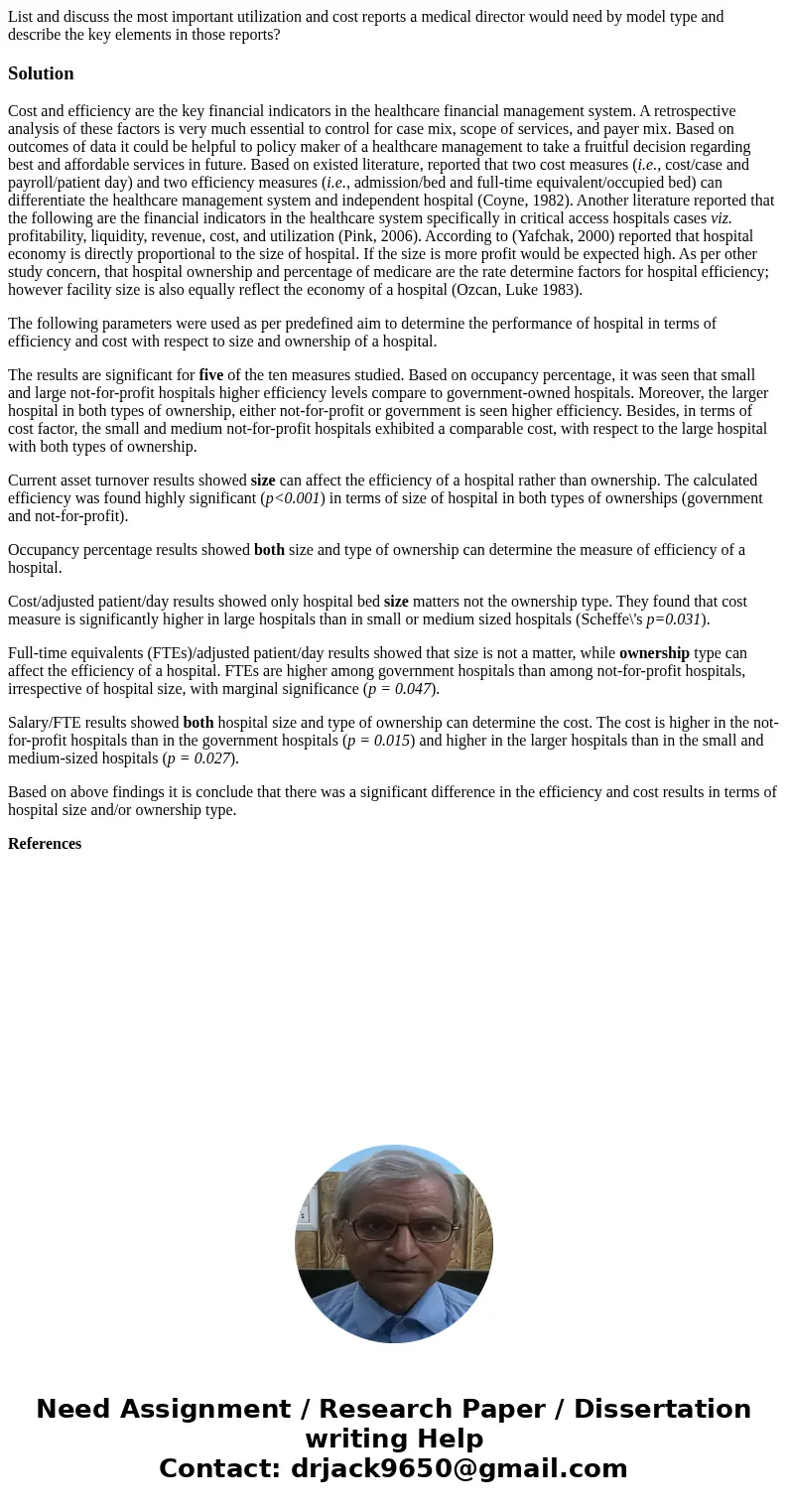List and discuss the most important utilization and cost rep
List and discuss the most important utilization and cost reports a medical director would need by model type and describe the key elements in those reports?
Solution
Cost and efficiency are the key financial indicators in the healthcare financial management system. A retrospective analysis of these factors is very much essential to control for case mix, scope of services, and payer mix. Based on outcomes of data it could be helpful to policy maker of a healthcare management to take a fruitful decision regarding best and affordable services in future. Based on existed literature, reported that two cost measures (i.e., cost/case and payroll/patient day) and two efficiency measures (i.e., admission/bed and full-time equivalent/occupied bed) can differentiate the healthcare management system and independent hospital (Coyne, 1982). Another literature reported that the following are the financial indicators in the healthcare system specifically in critical access hospitals cases viz. profitability, liquidity, revenue, cost, and utilization (Pink, 2006). According to (Yafchak, 2000) reported that hospital economy is directly proportional to the size of hospital. If the size is more profit would be expected high. As per other study concern, that hospital ownership and percentage of medicare are the rate determine factors for hospital efficiency; however facility size is also equally reflect the economy of a hospital (Ozcan, Luke 1983).
The following parameters were used as per predefined aim to determine the performance of hospital in terms of efficiency and cost with respect to size and ownership of a hospital.
The results are significant for five of the ten measures studied. Based on occupancy percentage, it was seen that small and large not-for-profit hospitals higher efficiency levels compare to government-owned hospitals. Moreover, the larger hospital in both types of ownership, either not-for-profit or government is seen higher efficiency. Besides, in terms of cost factor, the small and medium not-for-profit hospitals exhibited a comparable cost, with respect to the large hospital with both types of ownership.
Current asset turnover results showed size can affect the efficiency of a hospital rather than ownership. The calculated efficiency was found highly significant (p<0.001) in terms of size of hospital in both types of ownerships (government and not-for-profit).
Occupancy percentage results showed both size and type of ownership can determine the measure of efficiency of a hospital.
Cost/adjusted patient/day results showed only hospital bed size matters not the ownership type. They found that cost measure is significantly higher in large hospitals than in small or medium sized hospitals (Scheffe\'s p=0.031).
Full-time equivalents (FTEs)/adjusted patient/day results showed that size is not a matter, while ownership type can affect the efficiency of a hospital. FTEs are higher among government hospitals than among not-for-profit hospitals, irrespective of hospital size, with marginal significance (p = 0.047).
Salary/FTE results showed both hospital size and type of ownership can determine the cost. The cost is higher in the not-for-profit hospitals than in the government hospitals (p = 0.015) and higher in the larger hospitals than in the small and medium-sized hospitals (p = 0.027).
Based on above findings it is conclude that there was a significant difference in the efficiency and cost results in terms of hospital size and/or ownership type.
References

 Homework Sourse
Homework Sourse